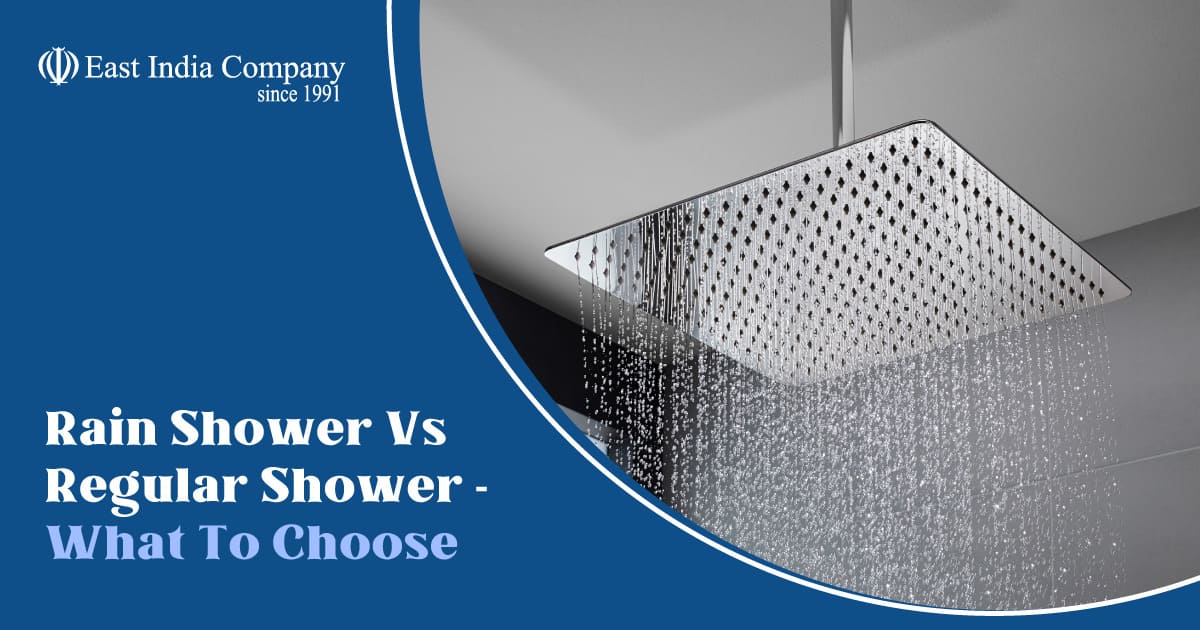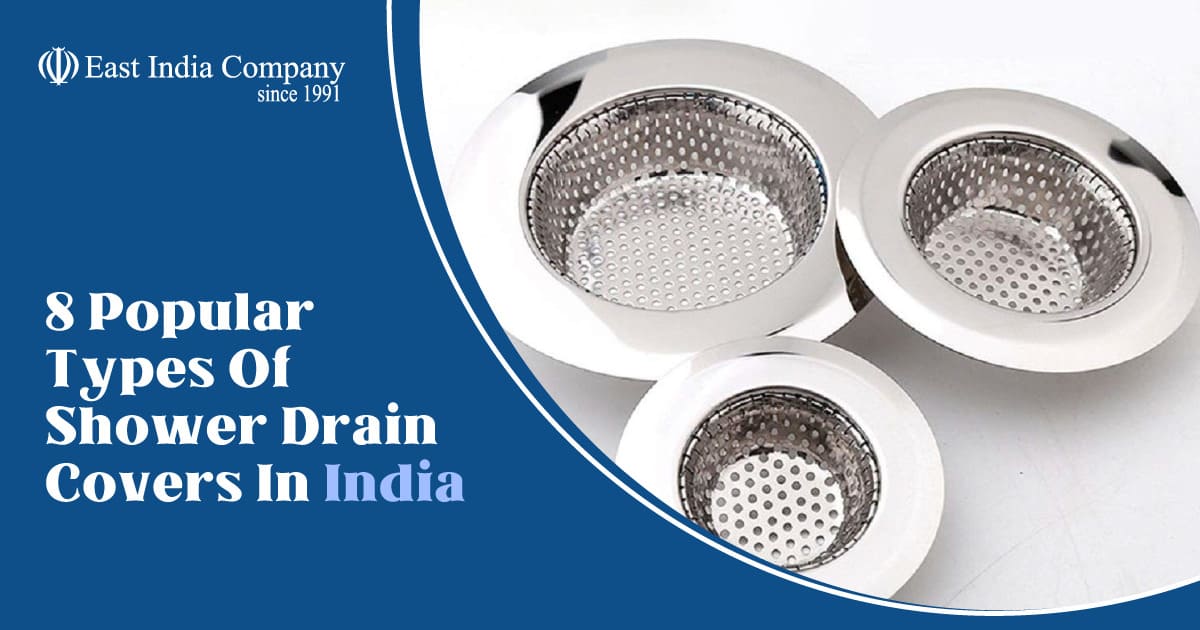What is sanitaryware?
Sanitary Ware refers to the fixtures and fittings installed in bathrooms and restrooms. The term encompasses products like toilets, basins, showers, bathtubs and other plumbing accessories. It is an essential component of any bathroom as it helps with personal hygiene and sanitation and serves both functional needs and aesthetic preferences.
In this blog post, we will explore the different types of sanitary ware commonly used and provide tips to help you choose the right options for your home.
Factors to Consider Before Buying Sanitary Ware
- Materials
- Styles
- Installment requirements
- Maintenance
- Costs
Purchase your bathroom fittings and fixtures at East India Company and bring your dream bathroom vision to life.
Here are the different types of sanitaryware
The right sanitary ware can transform the look and convenience of your bathroom. Let’s explore its types further.
Toilets
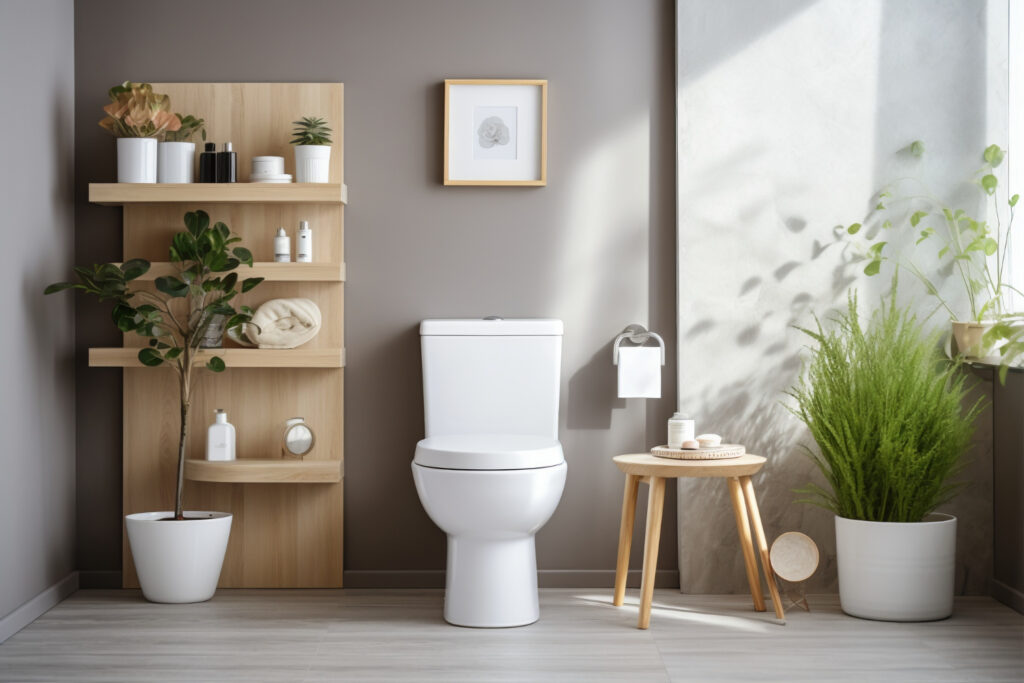
The toilet is arguably the most essential piece of sanitaryware. It comes in various styles, sizes and materials.
- Wall Hung Toilets: As the name suggests, these toilets hang on the wall rather than sitting on the floor.
- Back-to-Wall Toilets: The cistern is concealed inside the wall, creating a sleek look.
- Close Coupled Toilets: A cistern is attached directly to the toilet bowl for a compact look.
- Smart Toilets: High-tech toilets feature heated seats, adjustable water temperature, air dryers, odour extractors, automatic flush, touchless operation, and more.
- Floor-standing toilets: These sit directly on the floor. They offer more stability but take up more floor space.
- Corner toilets: Ideal for small bathrooms, corner toilets fit snugly into an angled space. Look for models with an elongated bowl for comfort.
- Compact toilets: Smaller in size, compact toilets are suitable for tight spaces like powder rooms.
- One-piece toilets: With the tank and bowl as a single unit, one-piece toilets provide seamless styling.
- Two-piece toilets: The tank is separate from the bowl. Choose from above-tank or in-wall concealed cisterns.
Basins
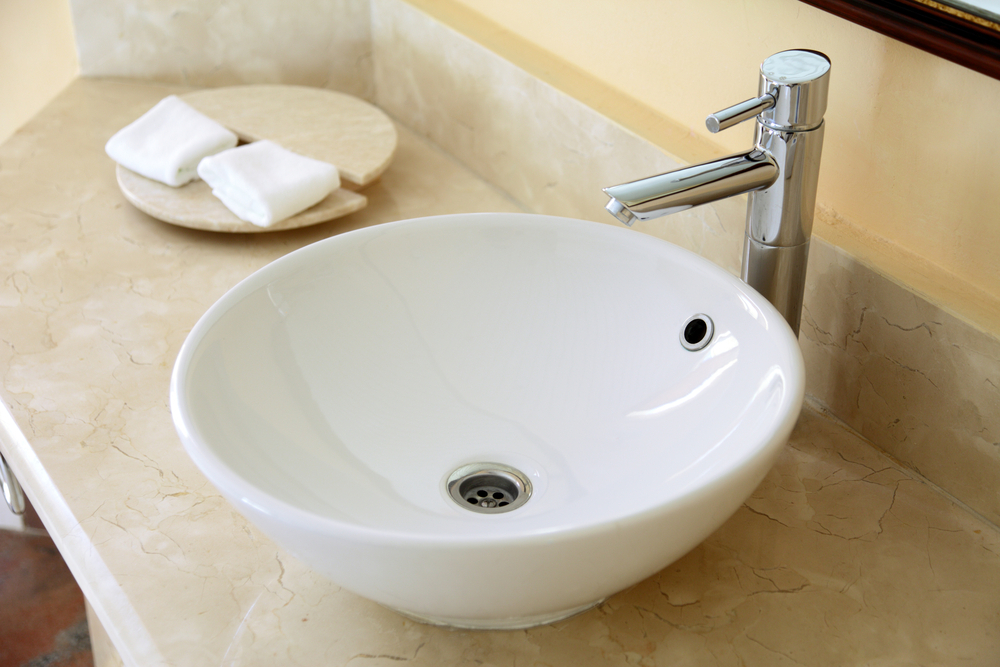
Washbasins are used for tasks like washing hands and brushing teeth. Also known as sinks, here are its popular basin types.
- Pedestal Basins: The basin sits on a pedestal, concealing plumbing.
- Wall Mounted Basins: These are mounted onto the wall without support below.
- Vessel Basins: Stylish basins that sit atop the vanity counter like a bowl rather than being recessed.
- Undermount Basins: The basins mount below the counter for a sleek, contemporary look.
- Corner Basins: Space-efficient basins designed for small bathrooms.
- Countertop Basins: They sit directly on the counter or vanity top.
Bidets
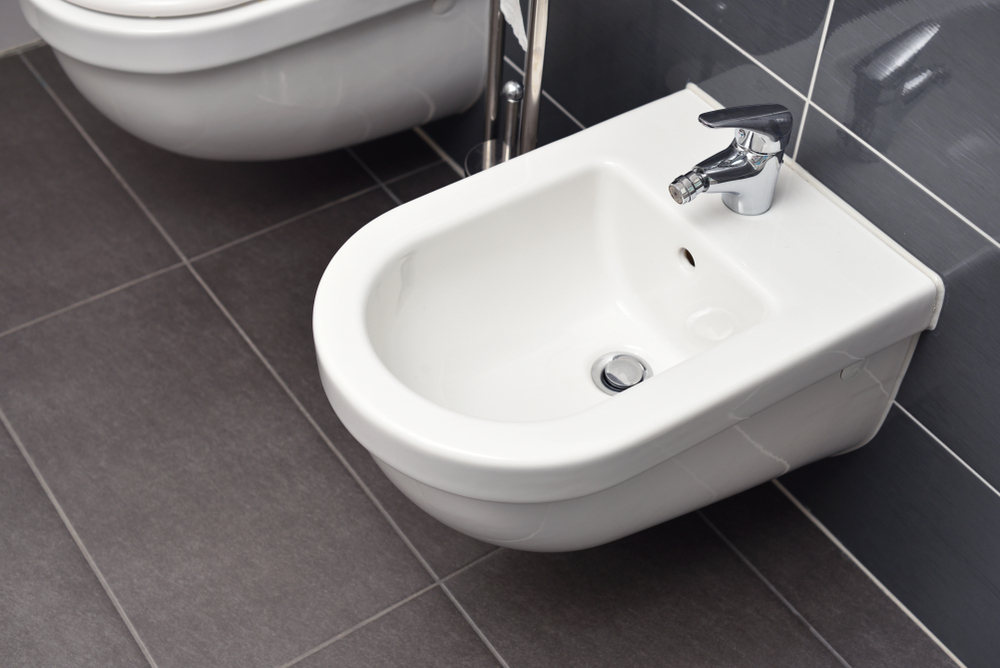
Bidets are useful sanitary fixtures for personal hygiene.
- Traditional bidets: They are freestanding units separate from toilets.
- Add-on bidets: They are attached directly to the toilet for a combined unit.
- Bidet seats: Retrofit onto existing toilets with a seat that functions as a bidet. It is an easy DIY installation.
- Toto washlet: High-end bidet seats with adjustable water pressure, temperature, positions and other features.
Urinals
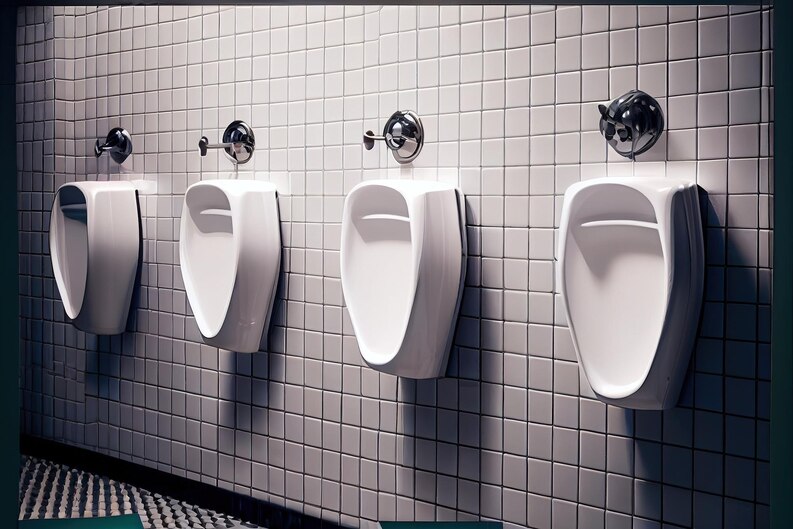
Urinals are used mainly by men in restrooms.
- Wall-hung urinals: These are mounted on the wall above the floor.
- Floor-standing urinals: These are freestanding models placed directly on the floor.
- Waterless urinals: These use a liquid sealant instead of water to trap odours. It is also an eco-friendly option.
- Divided urinals: These have partitions between units for privacy.
- Touchless urinals: They have sensor-based flushing for hygiene. Higher maintenance than manual flush urinals.
Bathtubs
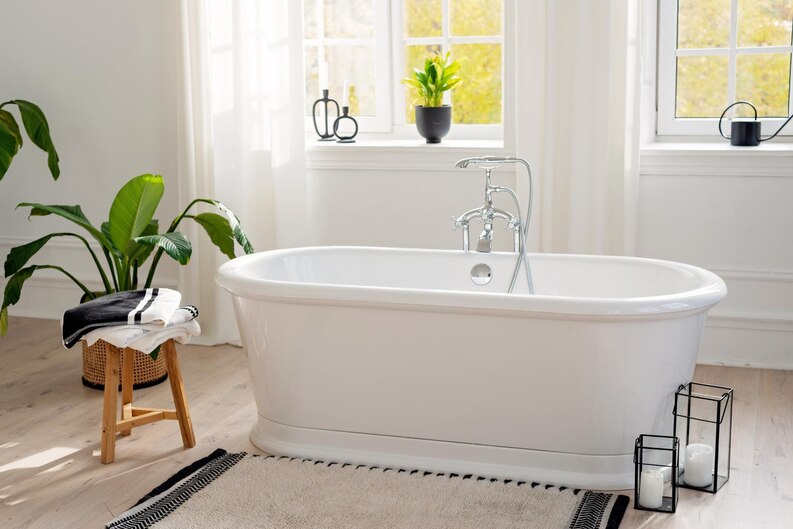
To relax in a warm bath, you should find a bathtub that suits your options.
- Freestanding Bathtubs: As a centrepiece of the bathroom, these tubs have finishes on all sides.
- Corner Bathtubs: They fit into a corner to maximise bathroom layouts and have unusual shapes.
- Drop-in Bathtubs: The tub is installed from above into a cut-out hole in the floor.
- Undermount Bathtubs: They are installed below the countertop, creating a smooth surface for easier cleaning.
- Alcove Bathtubs: They are enclosed on three sides by walls in a small recessed section.
Shower trays and enclosures

Showers come in various configurations to suit different spaces.
- Shower trays: They are recessed into the floor with walls on three sides.
- Shower stalls: They are box-like units with walls and a door and take up less space than trays but lack built-in looks.
- Walk-in showers: They are large stalls without a door for easy access. Require waterproofing of the entire area.
- Curved shower walls: They create a seamless look with curved glass or stone panels instead of corners.
- Glass shower doors/screens: They allow water to flow out while keeping the area dry. Sliding or hinged doors work the best.
- Shower panels: They are prefabricated modular wall panels for quick installation.
Bathroom accessories
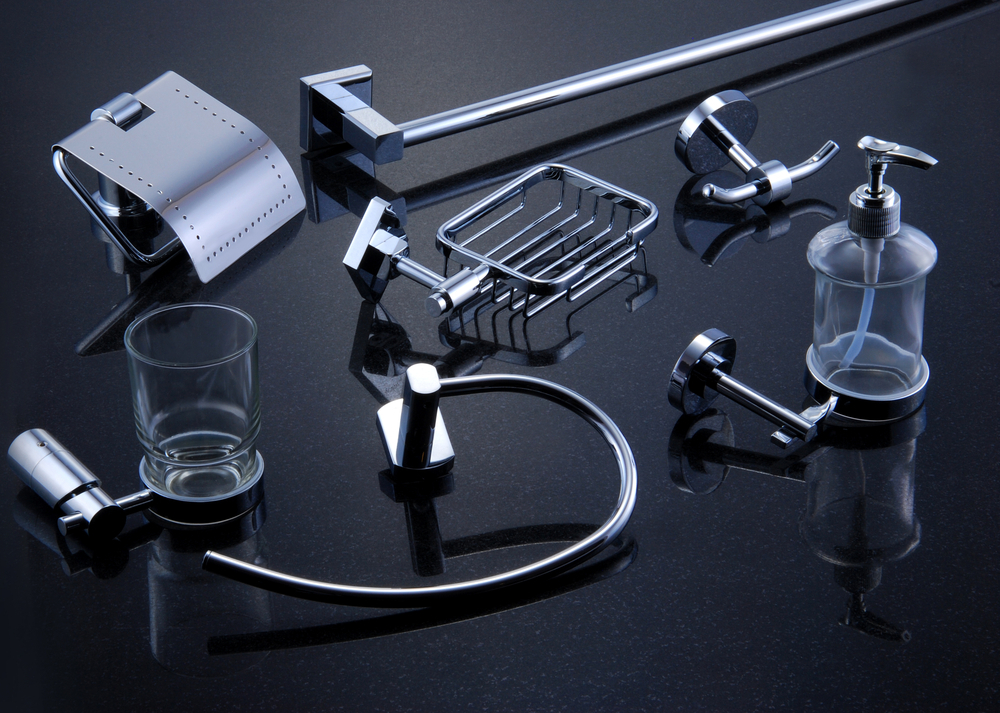
Bathroom accessories refer to the variety of fixtures beyond the core sanitaryware pieces. They are thoughtful, without which the bathroom is incomplete.
- Robe hooks, towel racks, and towel rings
- Toilet paper holders
- Toothbrush holders
- Soap dishes and soap dispensers
- Tumblers and bathroom cups
- Waste bins and hampers
- Wall-mounted mirrors
- Shelving units
Faucets and mixers

Next in types of sanitary ware are faucets and mixers, which control water flow. Faucets deliver water into sinks and tubs while mixers blend hot and cold water to set temperatures.
- Single Handle vs Centreset Faucets: Single handle faucets are controlled by one lever, while centreset have hot/cold knobs flanking the spout.
- Wall Mounted vs Deck Mounted: Wall-mounted faucets are integrated into the wall, while deck faucets are installed through the counter.
- Sensor Faucets: They are touchless, motion-activated faucets for added convenience.
- Pull-Out Spouts: They have useful features for rinsing or cleaning. Its detachable spray heads add flexibility.
Flush tanks and mechanisms

The flush tank stores the water needed to flush toilets. Toilet flush mechanisms include
- Gravity flush: Water flows down by gravity for a strong flush.
- Dual flush: Separate buttons/levers for liquid and solid waste.
- Pressure-assisted flush: Uses water pressure and a piston for a powerful flush with less water.
- Elongated flush buttons: Easier to use than round buttons, especially for children and the elderly.
- Automatic/sensor flush: Flushes with no touch.
Exhaust fans
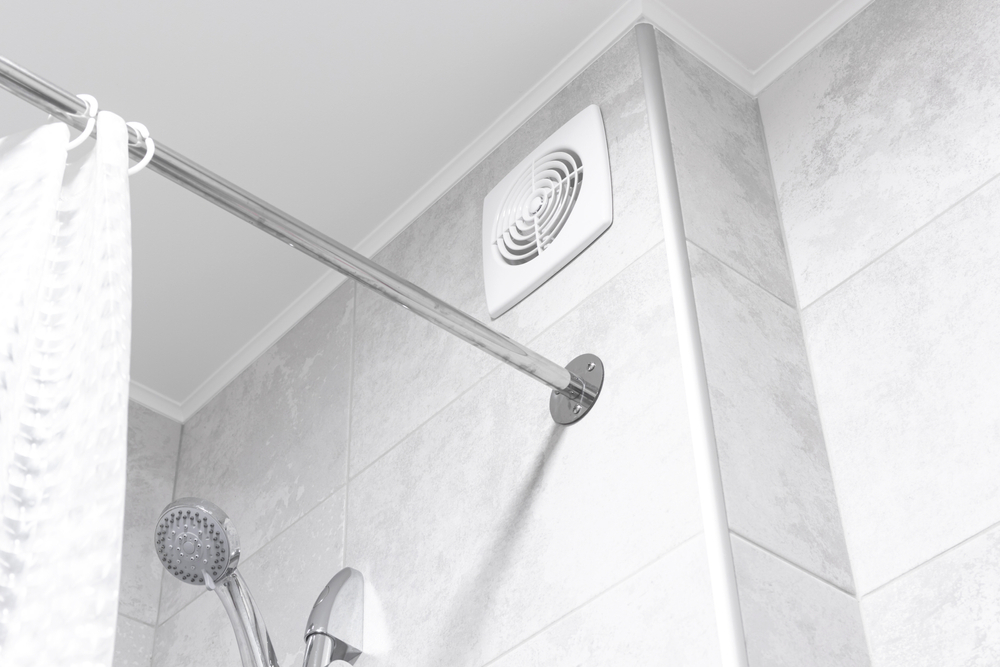
Exhaust fans forcibly ventilate air to reduce moisture, odours, and mould risks and keep the bathroom fresh. Many have built-in lights, timers, and humidity sensors.
- Wall-mounted fans: Project a few inches from the wall for ductwork.
- Window fans: Mount on existing windows to vent directly outside.
- Inline fans: Installed within the ductwork itself rather than surface mounting.
Water heaters

Water heaters instantly provide hot water when needed.
- Tank water heaters: Store heated water for on-demand use.
- Tankless water heaters: Heat water instantly as needed to save space.
- Solar water heaters: Harness the sun’s energy for free hot water using solar panels on your roof.
Shower panels
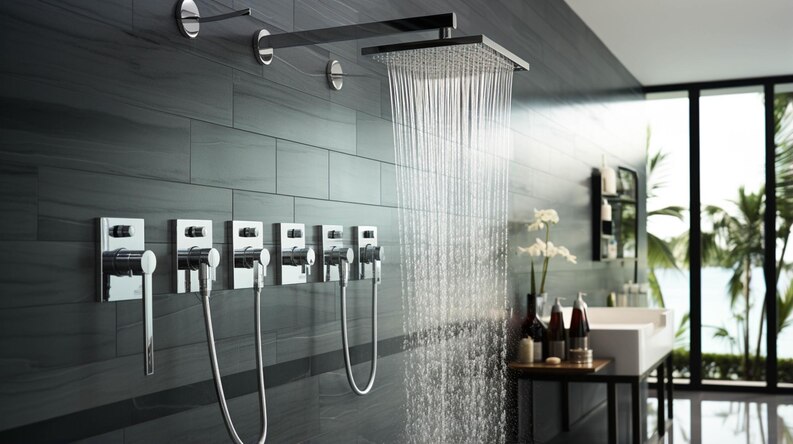
Shower panels are all-in-one luxury wall-mounted panels that integrate faucets, shower heads, body sprays, and features like steam, lighting, and Bluetooth.
Mirror cabinets

Mirror cabinets are mounted to the wall above bathroom sinks to store toiletries and medicines. Some have integrated lighting, defoggers, Bluetooth speakers and charging ports.
- Surface-mounted mirrors: They adhere directly to the walls above the vanity.
- Recessed medicine cabinets: They are mounted inside a wall cavity for hidden storage behind the mirror doors.
- Wall-mounted cabinets: They are surface-mounted boxes with mirror doors and interior shelves.
- Freestanding cabinets: They are floor-standing furniture pieces with an integrated mirror.
Buy high-quality sanitaryware at East India Company
Upgrade your bathroom in style with sanitary ware from East India Company. As Chennai’s premier sanitary ware retailer, we offer the city’s finest brands and widest selection. Browse our showroom to discover toilet suites, cisterns, faucets, shower panels, and bath fittings crafted with precision.
We have the latest trends, like sensor faucets, rain shower heads, and chromotherapy showers. Our experienced designers will help transform your vision into reality. Visit our store today or shop online here. Experience world-class bath solutions designed to last because quality is non-negotiable at East India Company.
Conclusion
We hope the question ‘What is sanitary ware?’ is cleared now. With different types of sanitary ware options available, selecting the ideal one requires understanding the different product categories, features, and terminology.
Carefully evaluate options based on intended bathroom design, practical needs, personal preferences, and budget. Investing in durable, high-quality sanitary ware can enhance convenience and enjoyment for years to come.
FAQs
1). What does sanitary ware include?
Sanitary ware includes bathroom fixtures and fittings used for personal hygiene and sanitation. Some common examples are water closets or toilets, wash basins, bathtubs, and shower trays. Sanitary ware is an important part of bathroom planning and design to help maintain cleanliness and public health.
2). How do I maintain my sanitary ware?
Regularly clean your toilets, wash basins, bathtubs and shower trays using a disinfectant cleaner to remove dirt, grime and bacteria. Inspect your sanitary ware for any cracks, leaks or damage and make repairs as needed to ensure proper hygiene. Give your sanitary ware a thorough cleaning at least once a week.
3). How long do sanitary ware products last?
On average, toilets and sinks will typically last 10-15 years before needing to be replaced if cleaned regularly, any issues are addressed promptly. Well-made bathtubs and shower trays from reputable brands may last even longer, around 15-20 years or more, when installed correctly and not subjected to excessive wear and tear.
4). What factors should I consider before buying sanitary ware?
When buying sanitary ware, consider the bathroom size and space for a proper fit, material for suitability, family needs now and later for durability and reviews for quality, styles and longevity.
5). What are the different types of toilets?
Wall-hung toilets are mounted on the wall above the floor. Floor-mounted toilets sit directly on the bathroom floor. Back-to-wall toilets have a rear connection for a close fit against the wall. Tankless or flushometer toilets are commonly found in commercial buildings and do not have an internal tank.


